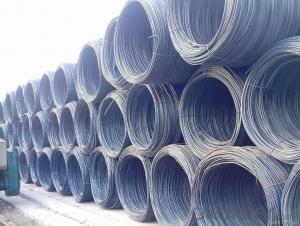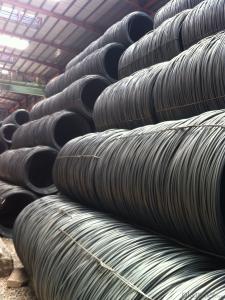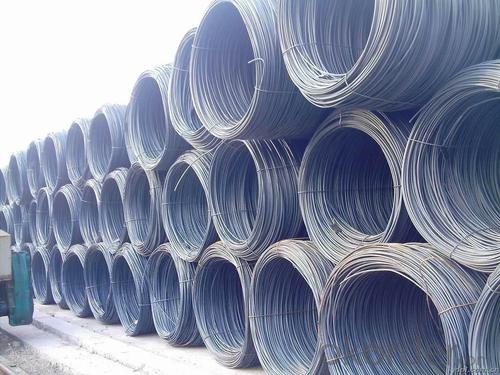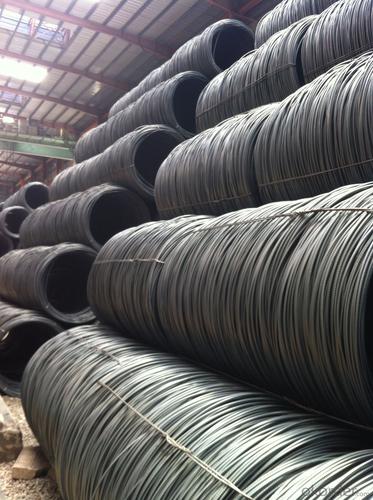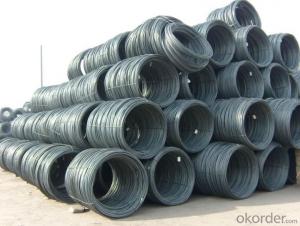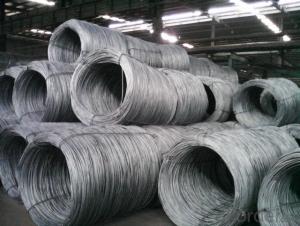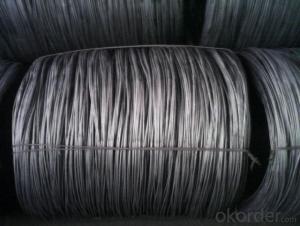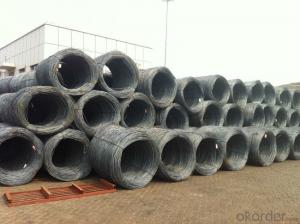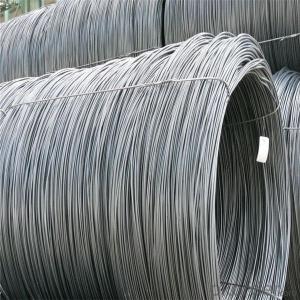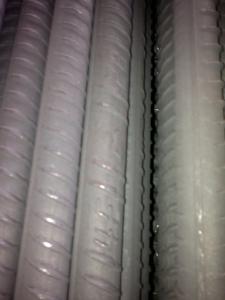Steel Wire Rods in SAE1006-SAE1018 with High Quality
- Loading Port:
- Tianjin
- Payment Terms:
- TT OR LC
- Min Order Qty:
- 25 m.t
- Supply Capability:
- 10000 m.t/month
OKorder Service Pledge
OKorder Financial Service
You Might Also Like
OKorder is offering wire rods at great prices with worldwide shipping. Our supplier is a world-class manufacturer of steel, with our products utilized the world over. OKorder annually supplies products to European, North American and Asian markets. We provide quotations within 24 hours of receiving an inquiry and guarantee competitive prices.
Product Applications:
After hot-rolled the products shaped into coil and delivery as finished product, including round, square,rectangular, hexagonal and so on. Since most of the products are round, it is generally called wire rod. Carbon steel wire rod is widely used in construction and manufacturing. Carbon steel wire rod is mainly used for reinforcement of reinforced concrete and welded structure or reprocessed (roberts , nail, etc.) materials, especially used to produce wire drawing, welding electrode, nails, spring, electronic, precise machinery parts and so on.
Product Advantages:
OKorder's Wire rods are durable, strong, and resist corrosion.
Main Product Features:
· Premium quality
· Prompt delivery & seaworthy packing (30 days after receiving deposit)
· Corrosion resistance
· Can be recycled and reused
· Mill test certification
· Professional Service
· Competitive pricing
Product Specifications:
Manufacture: Hot rolled
Grade: SAE1006-SAE1018
Certificates: ISO, SGS, BV, CIQ
Packaging: Export packing, nude packing, in coils
Grade | Chemical Composition (%) | |||||
C | Mn | S | P | Si | B | |
SAE1008B | 0.10max | 0.32max | 0.045max | 0.040max | 0.30max | 0.0008min |
Mechanical properties | ||||||
Yield strength(N/mm2) | Tensile strength(N/mm2) | Elongation (%) | ||||
≥195 | 350-380 | ≥32 | ||||
FAQ:
Q1: How soon can we receive the product after purchase?
A1: Within three days of placing an order, we will begin production. The specific shipping date is dependent upon international and government factors, but is typically 7 to 10 workdays.
Q2: How do we guarantee the quality of our products?
A2: We have established an advanced quality management system which conducts strict quality tests at every step, from raw materials to the final product. At the same time, we provide extensive follow-up service assurances as required.
Q3: The products are invoicing on theoritical weight or on actual weight?
A3: Usually, on actual weight.
Images:
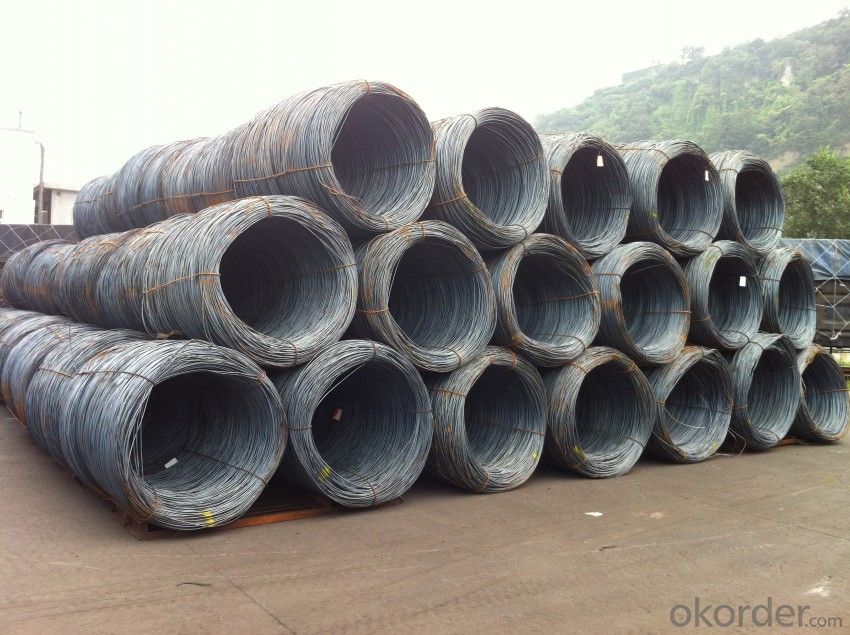
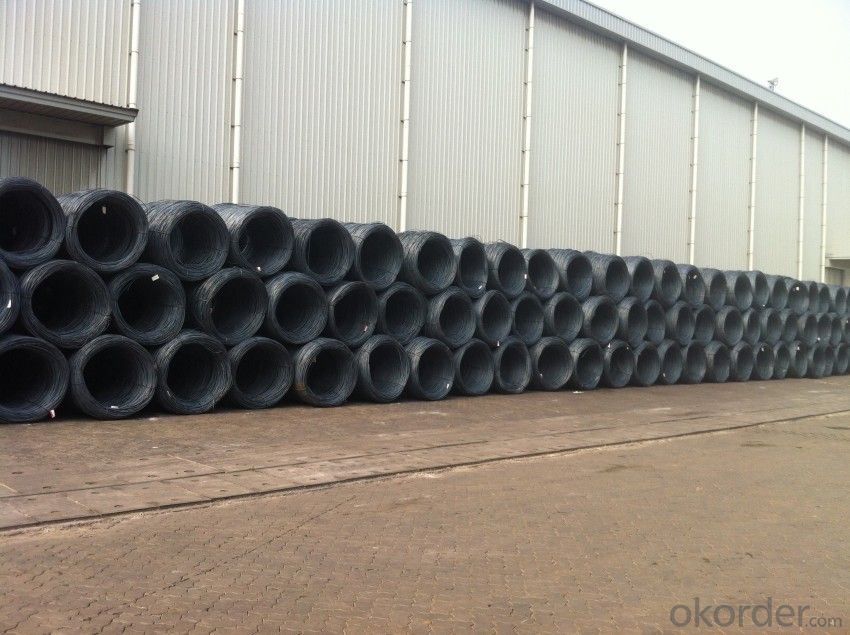
- Q: What are the different types of steel wire rod coatings used for improved machinability?
- There are several different types of steel wire rod coatings that can be used to improve machinability. These coatings are designed to reduce friction and heat during the machining process, which helps to improve tool life and increase productivity. One common type of coating used for improved machinability is a titanium nitride (TiN) coating. TiN coatings provide a hard, wear-resistant surface that reduces friction and heat buildup, resulting in improved tool life and increased cutting speeds. Additionally, TiN coatings can help prevent built-up edge formation and improve chip flow, further enhancing machinability. Another type of coating used for improved machinability is a titanium carbonitride (TiCN) coating. TiCN coatings have similar properties to TiN coatings, but they offer higher hardness and improved resistance to abrasive wear. This makes TiCN-coated wire rods particularly suitable for machining hard materials or in applications with high cutting speeds. Diamond-like carbon (DLC) coatings are also used for improved machinability. DLC coatings provide a low coefficient of friction, excellent hardness, and good thermal stability. These properties make DLC-coated wire rods ideal for high-speed machining operations, as they reduce friction and heat generation. Other commonly used coatings for improved machinability include aluminum titanium nitride (AlTiN) and zirconium nitride (ZrN) coatings. AlTiN coatings offer high hardness, excellent oxidation resistance, and low friction, making them well-suited for machining stainless steels and other difficult-to-machine materials. ZrN coatings provide good hardness and wear resistance, along with low friction, making them suitable for various machining applications. In conclusion, the different types of steel wire rod coatings used for improved machinability include titanium nitride (TiN), titanium carbonitride (TiCN), diamond-like carbon (DLC), aluminum titanium nitride (AlTiN), and zirconium nitride (ZrN) coatings. Each of these coatings offers specific advantages and is chosen based on the specific machining requirements and material being worked on.
- Q: How are steel wire rods used in the manufacturing of surgical instruments?
- Due to their strength, durability, and flexibility, steel wire rods are crucial in the production of surgical instruments. These rods are typically made from high-quality stainless steel, which possesses excellent resistance to corrosion and biocompatibility, making it an ideal material for medical applications. In the manufacturing process of surgical instruments, steel wire rods are initially chosen based on specific requirements such as diameter, tensile strength, and composition. Subsequently, the rods undergo a series of procedures, including cutting, shaping, and bending, in order to form the desired structure of the instrument. One common application of steel wire rods in surgical instruments is for the creation of the shaft or handle. These rods are often shaped into intricate patterns or designs to ensure a comfortable and ergonomic grip for surgeons. The high strength of steel wire rods allows the instruments to endure repeated use, providing longevity and reliability. Another significant utilization of steel wire rods is in the production of surgical needles. The rods are drawn down to the necessary diameter and then sharpened to form the point of the needle. The flexibility of steel wire enables the needle to be easily maneuvered during surgical procedures, ensuring precise and accurate incisions. Additionally, steel wire rods can be employed in the construction of various surgical tools such as forceps, retractors, and clamps. These instruments require a combination of strength and flexibility, both of which are offered by steel wire rods, facilitating surgeons in performing delicate and intricate procedures with ease. All in all, steel wire rods play a vital role in the manufacturing of surgical instruments as they provide the essential strength, durability, and flexibility required for these crucial medical tools. Their use guarantees the quality and reliability of surgical instruments, thereby contributing to the advancement of modern healthcare practices.
- Q: What are the main factors affecting the machined surface finish of steel wire rod?
- The main factors affecting the machined surface finish of steel wire rod include the quality of the raw material used, the condition of the cutting tools, the machining parameters such as cutting speed and feed rate, the lubrication and cooling methods employed, and the skill and experience of the operator.
- Q: How is steel wire rod used in the manufacturing of wire rope turnbuckles?
- Steel wire rod is used in the manufacturing of wire rope turnbuckles as it serves as the raw material for creating the wire rope. The steel wire rod is first drawn and shaped into individual wires which are then twisted or braided together to form the wire rope. This wire rope is then utilized to construct the main body of the turnbuckle, providing it with strength, durability, and the ability to withstand heavy loads and tensions.
- Q: What are the different weldability testing methods for steel wire rod?
- There are several different weldability testing methods for steel wire rod. These include the macroscopic examination, which involves visually inspecting the weld for any defects or anomalies; the bend test, where the weld is bent to evaluate its ductility and resistance to cracking; the tensile test, which measures the strength and elongation of the weld; the hardness test, which determines the hardness of the weld and its susceptibility to cracking; and the impact test, which assesses the weld's ability to withstand sudden loads and impacts.
- Q: What are the main factors affecting the fatigue resistance of steel wire rod?
- The main factors affecting the fatigue resistance of steel wire rod include the material composition, surface condition, manufacturing process, applied stress levels, and environmental conditions. Additionally, factors such as the presence of defects, notch sensitivity, and the level of pre-existing damage also influence the fatigue resistance.
- Q: How is steel wire rod used in the manufacturing of wire forms for automotive cooling systems?
- Steel wire rod is commonly used in the manufacturing of wire forms for automotive cooling systems due to its excellent strength and durability properties. Wire forms are essential components in these systems as they provide structural support and help maintain the desired shape and functionality of various cooling system components. One of the main applications of steel wire rod in automotive cooling systems is in the production of radiator cores. Radiator cores are typically made up of a network of small tubes and fins that are responsible for transferring heat from the engine coolant to the surrounding air. These tubes and fins are often connected and supported by wire forms made from steel wire rod. Steel wire rod is selected for this purpose due to its high tensile strength, which allows the wire forms to withstand the pressure and vibration that occur in automotive cooling systems. Additionally, steel wire rod offers excellent resistance to corrosion, ensuring the longevity and reliability of the wire forms in harsh operating conditions. In the manufacturing process, steel wire rod is first formed into the desired shape using specialized machinery. The wire is then subjected to various heat treatment processes to enhance its strength and flexibility. Once the wire forms are fabricated, they are integrated into the radiator core assembly, providing support and stability to the tubes and fins. Moreover, steel wire rod is also used in the manufacturing of other wire forms in automotive cooling systems, such as hose clamps, brackets, and hooks. These wire forms play crucial roles in securing hoses, connecting components, and providing structural support to ensure the proper functioning of the cooling system. Overall, steel wire rod is an essential material in the manufacturing of wire forms for automotive cooling systems. Its strength, durability, and corrosion resistance make it an ideal choice for supporting and maintaining the integrity of various cooling system components, ultimately contributing to the efficient operation of the automotive cooling system.
- Q: What are the factors affecting the price of steel wire rods?
- The price of steel wire rods can be affected by several factors, including: 1. Supply and demand dynamics: The equilibrium between the supply and demand of steel wire rods in the market plays a significant role in determining their prices. When demand surpasses supply, prices tend to rise. Conversely, an excess supply can lead to price reductions. 2. Raw material expenses: The costs associated with raw materials like iron ore and coal, which are essential for manufacturing steel wire rods, can directly impact their prices. Price fluctuations in these inputs can influence the overall production cost and, consequently, the price of steel wire rods. 3. Energy expenditure: The energy-intensive nature of steel production means that variations in energy prices, such as electricity and fuel costs, can have a substantial effect on the price of steel wire rods. Higher energy expenses can increase production costs and result in higher prices for the end product. 4. Currency exchange rates: The international trade of steel wire rods makes them susceptible to currency exchange rate changes. If the currency of a steel-producing country weakens against other currencies, it can enhance their export competitiveness, potentially leading to lower prices in the global market. 5. Government policies and regulations: Government policies, including tariffs, import/export restrictions, and environmental regulations, can impact the price of steel wire rods. Trade barriers can restrict the supply from specific regions, leading to higher prices. Additionally, stricter environmental regulations can raise production costs, which can be passed on to consumers as higher prices. 6. Technological advancements: Advances in technology and production techniques can influence the manufacturing cost of steel wire rods. More efficient production methods can reduce costs and potentially lower prices. However, significant investments in new technologies or higher quality products may result in price increases. In summary, the price of steel wire rods is influenced by market forces, input costs, government policies, and technological advancements. A comprehensive understanding of these factors is crucial for industry participants and consumers to make informed decisions and anticipate price fluctuations in the steel wire rod market.
- Q: What are the common traceability requirements for steel wire rod?
- Common traceability requirements for steel wire rod include the need to track the origin and quality of the steel, ensuring compliance with industry standards and specifications. This includes documenting the steel's mill test reports, heat number, and chemical composition, as well as the production process and any subsequent treatments or modifications. Additionally, traceability requirements may involve maintaining records of inspections, testing, and certifications, enabling the identification and resolution of any potential quality issues throughout the supply chain.
- Q: What are the factors that affect the tensile strength of steel wire rod?
- There are several factors that can affect the tensile strength of steel wire rod. These include: 1. Chemical composition: The specific combination of elements in the steel, such as carbon, manganese, and silicon, can significantly impact its tensile strength. Higher carbon content generally leads to greater strength, while other alloying elements can further enhance or reduce strength depending on their properties. 2. Heat treatment: The process of heating and cooling steel wire rod can alter its microstructure and ultimately affect its tensile strength. Various heat treatment methods, such as quenching and tempering, can be employed to achieve the desired strength level. 3. Manufacturing process: The way the steel wire rod is produced and processed can also influence its tensile strength. Factors such as rolling temperature, reduction ratio, and cooling rate can affect the alignment of the steel's crystalline structure, which in turn affects its strength properties. 4. Grain size: The size of the grains in the steel wire rod can have an impact on its tensile strength. Smaller grain sizes generally lead to higher strength, as they provide more barriers for dislocations to move through the material. 5. Surface condition: The presence of surface defects, such as cracks or scratches, can act as stress concentrators and weaken the tensile strength of the steel wire rod. Therefore, proper surface treatment and handling during manufacturing and transportation are crucial in maintaining its strength. 6. Environmental conditions: The environment in which the steel wire rod is used can also affect its tensile strength. Factors such as temperature, humidity, and exposure to corrosive substances can lead to degradation or embrittlement of the material, resulting in reduced strength. Overall, the tensile strength of steel wire rod is influenced by a combination of its chemical composition, heat treatment, manufacturing process, grain size, surface condition, and environmental factors. Understanding and controlling these factors are essential in ensuring the desired strength and performance of the steel wire rod in various applications.
Send your message to us
Steel Wire Rods in SAE1006-SAE1018 with High Quality
- Loading Port:
- Tianjin
- Payment Terms:
- TT OR LC
- Min Order Qty:
- 25 m.t
- Supply Capability:
- 10000 m.t/month
OKorder Service Pledge
OKorder Financial Service
Similar products
Hot products
Hot Searches
Related keywords
